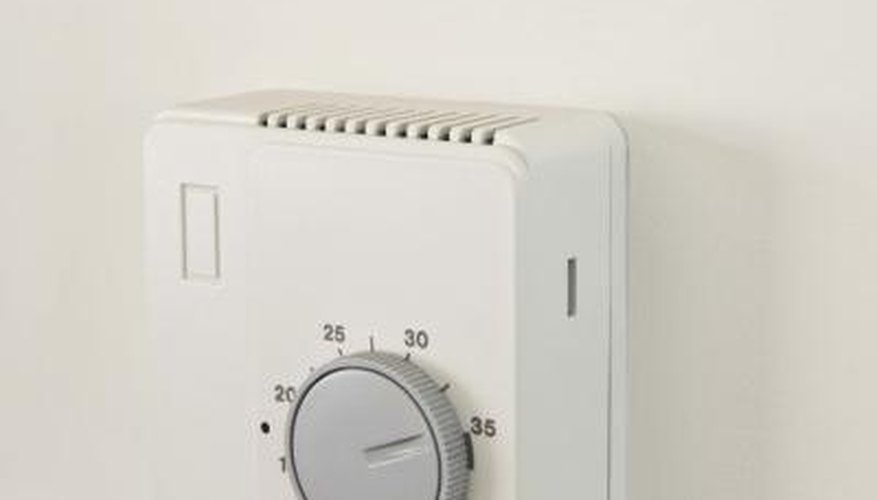A thermostat is a temperature regulatory device that allows a homeowner to set an air conditioner or heat pump to a desired temperature. Old Honeywell thermostats, as well as other manufacturers, used mercury in the past. Mercury thermostats work by using bimetallic strips of two dissimilar metals, affected by the coefficient of thermal expansion. In laymen's terms, that means mercury thermostats "feel" the temperature of the room and turn the air or heat on or off.
- A thermostat is a temperature regulatory device that allows a homeowner to set an air conditioner or heat pump to a desired temperature.
- In laymen's terms, that means mercury thermostats "feel" the temperature of the room and turn the air or heat on or off.
Close or turn off the air conditioning or heat pump breaker on the main electrical panel. Turn the thermostat to "off."
Remove the thermostat faceplate. Unscrew the thermostat from the wall by undoing the fastening screws with a screwdriver. Place the fastening screws in a plastic bag to keep until remounting the thermostat.
Remove the thermostat from the wall. In some instances, paint may adhere to the back of the unit; you may have to pry the thermostat from the wall with the screwdriver tip.
Wipe the back of the thermostat off with a dust cloth. Look for the letter "Y," followed by "C," "CT" or "T," "TH" or "RTH." Write down the entire model number on a notepad, look up the model number on Honeywell's website under the section entitled "Find Your Model Number" (See Resources).
